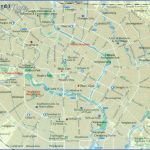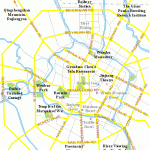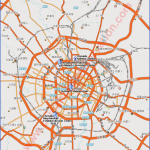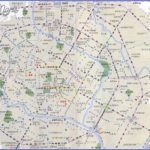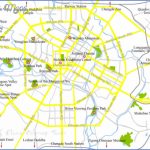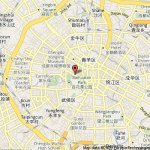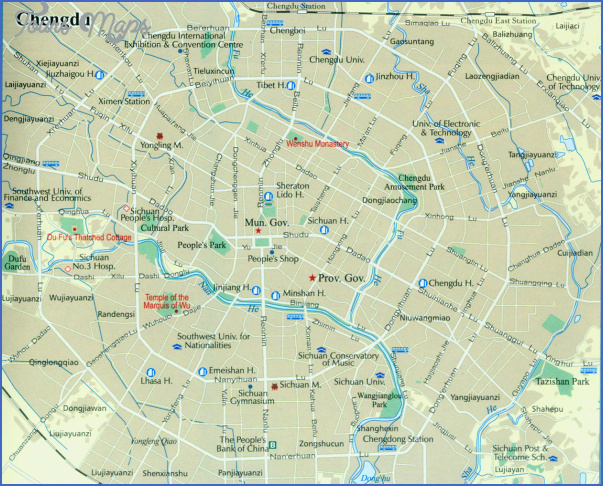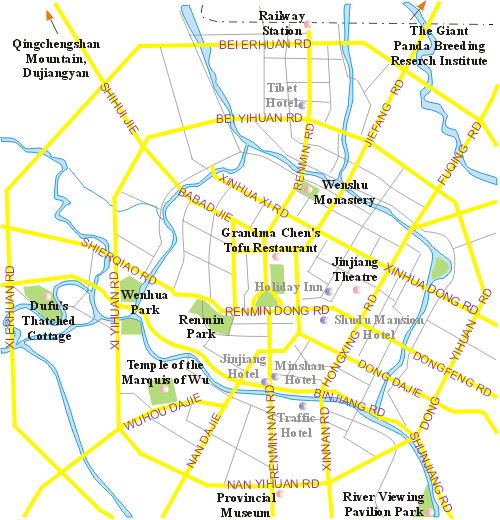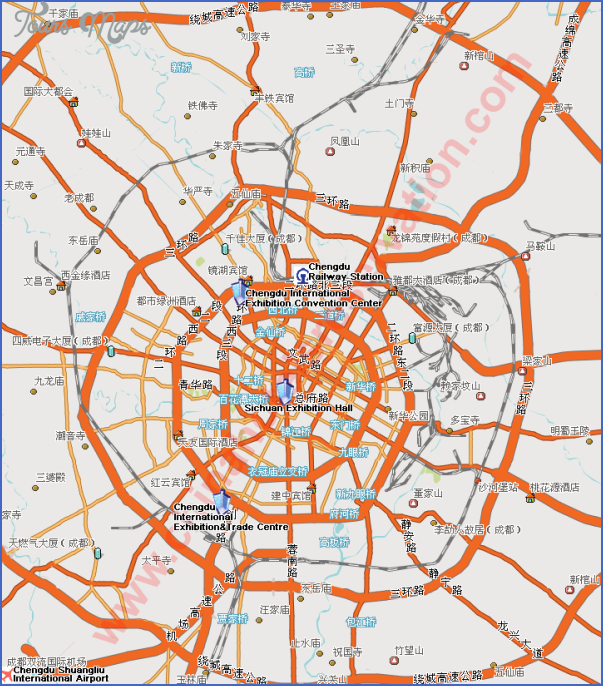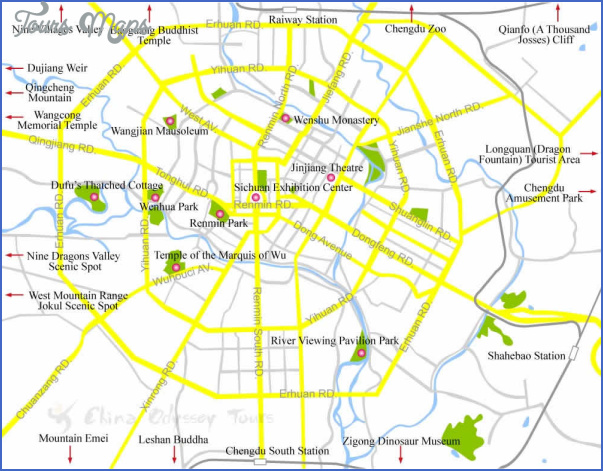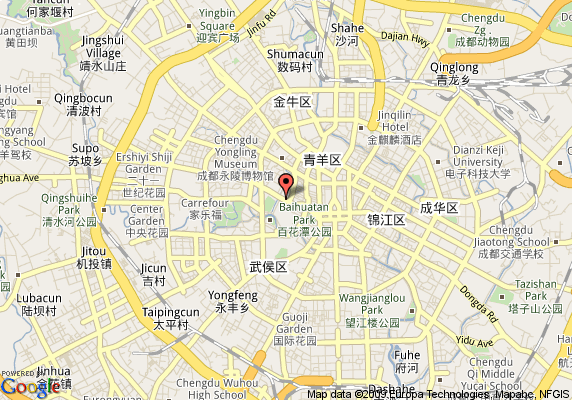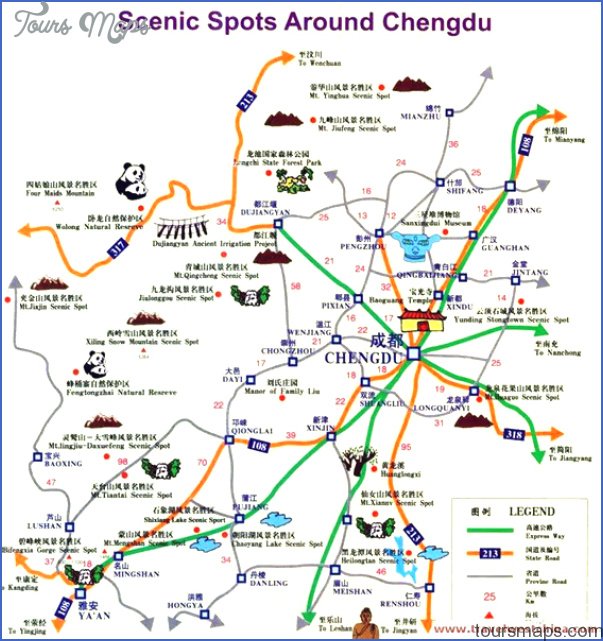Capital of Sichuan Province
Altitude: 500m/1640ft. Area: 1447sq.km/559sq. miles Population: 2,540,000 (conurbation 4,420,000)
Situation and Chengdu lies in an important rice and wheat-growing region in the centre
Communications 0f the province of Sichuan at 104°04’E and 30°35’N.
Chengdu is linked with Beijing, Shanghai and Canton by air and rail routes. More than twenty express trains and forty direct air flights – including some to Lhasa – connect it with all the major towns in China.
History Chengdu was the capital of the Shu (Zhou) kingdom which was conquered by the Qin in 316 b.c. Underthe Qin and Han dynasty (221 b.c. to a.d. 220) it advanced to become the political, economic and cultural centre of southwest China. Even at that time the breeding of silkworms and weaving of brocade were already highly developed industries.
One of China’s oldest and most respected state schools was founded here. In the period of the Three Kingdoms (220-280) Chengdu, by now the capital of the state of Shu Han, saw the art of brocade weaving flourish as
Backyard of a typical quarter of Chengdu never before. In the 8th c. it became a centre of trade, commerce and industry, which included lacquered and silver filigree work. At the time of the Five Dynasties (907-960) Emperor Meng’Chang (919-965) arranged for large numbers of little hibiscus trees to be planted along the town wall and the streets. Chengdu became the capital of Sichuan in 1368.
As a result of its history Chengdu is even today still often known as Brocade City (Jin Cheng) or Hibiscus City (Rong Cheng). It is also a major traffic hub and industrial town with a considerable volume of light and heavy industry. Moreover, its fourteen colleges, including Sichuan University which was founded here in 1927, make it an important cultural centre.
After the Cultural Revolution Chengdu’s tradition of tea-houses was Tea-houses revived. Today there are a large number of them, one of the most famous being the Yuelai Tea-house (Yuelai Chaguan).
In tea-houses guests will receive a cup of tea which will be repeatedly topped up with hot water.
From time to time the Sichuan Opera, a 300 year-old variation on classical opera, is peformed in Chengdu.
This mosque, which towers above the buildings of the Old Town south of the bell-tower, probably dates from the time of the Qianlong Emperor (1736-96), as suggested by the inscription “Seventh year of the empire of Qianlong” found on a beam in the building.
In a Japanese air-raid in 1941 all the mosque buildings apart from the prayer-hall were destroyed.
The rectangular building is 25-7m/84ft long and 11-7m/38ft wide, and completely covered in enamelled tiles.
The first temple was built by a Li Xiong in 302 in honour of Zhuge Liang Temple of (181-234), a legendary military strategist and statesman, who was also Prince Wu chancellor of the Shu Han empire (221-263). For his services Zhuge Liang (Wuhou Ci) was made a Prince (Marquis) in 223. This temple, which was rebuilt in 1672, is situated in the south-west of Chengdu.
In the central hall stands a gilded clay figure of Zhuge Liang, in front of which are three bronze drums dating from before the 6th c. b.c. The two small figures on either side of the Prince are of his son and grandson.
There is also a temple here dedicated to Liu Bei, the ruler of the Shu Han empire. To the west of it lies the 12m/40ft high burial mound which contains his last remains. Twenty-eight terracotta statues of ministers, generals and high officials of the state of Shu Han are displayed in the east and west covered walks. In front of each statue is a small stele inscribed with details of the life of the person concerned.
Chengdu Map Photo Gallery
Maybe You Like Them Too
- The Best Cities To Visit in The World
- World’s 10 Best Places To Visit
- Coolest Countries in the World to Visit
- Travel to Santorini, Greece
- Map of Barbados – Holiday in Barbados

